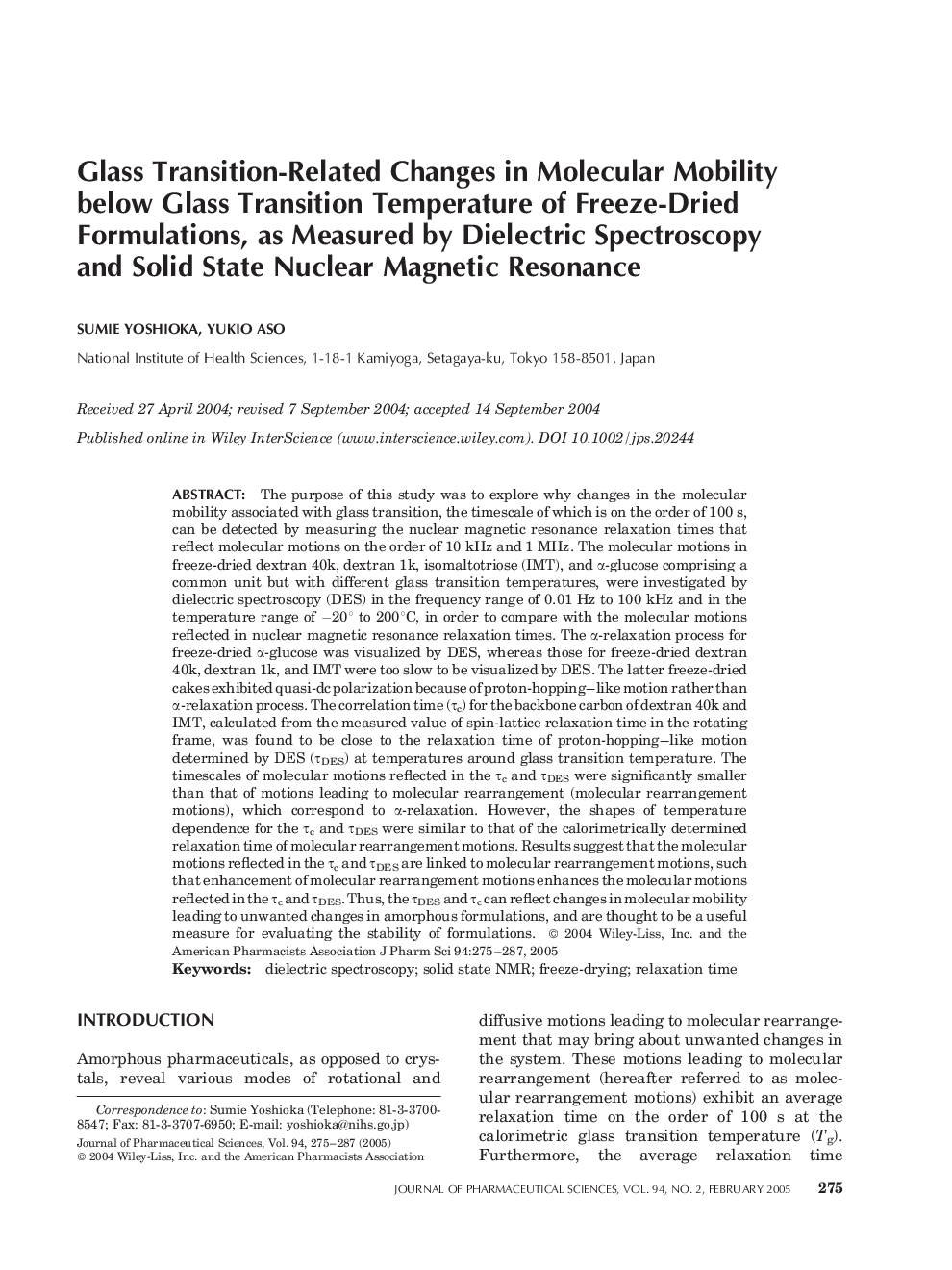| کد مقاله | کد نشریه | سال انتشار | مقاله انگلیسی | نسخه تمام متن |
|---|---|---|---|---|
| 8994460 | 1114416 | 2005 | 13 صفحه PDF | دانلود رایگان |
عنوان انگلیسی مقاله ISI
Glass Transition-Related Changes in Molecular Mobility below Glass Transition Temperature of Freeze-Dried Formulations, as Measured by Dielectric Spectroscopy and Solid State Nuclear Magnetic Resonance
دانلود مقاله + سفارش ترجمه
دانلود مقاله ISI انگلیسی
رایگان برای ایرانیان
کلمات کلیدی
موضوعات مرتبط
علوم پزشکی و سلامت
داروسازی، سم شناسی و علوم دارویی
اکتشاف دارویی
پیش نمایش صفحه اول مقاله

چکیده انگلیسی
The purpose of this study was to explore why changes in the molecular mobility associated with glass transition, the timescale of which is on the order of 100 s, can be detected by measuring the nuclear magnetic resonance relaxation times that reflect molecular motions on the order of 10 kHz and 1 MHz. The molecular motions in freeze-dried dextran 40k, dextran 1k, isomaltotriose (IMT), and α-glucose comprising a common unit but with different glass transition temperatures, were investigated by dielectric spectroscopy (DES) in the frequency range of 0.01 Hz to 100 kHz and in the temperature range of â20° to 200°C, in order to compare with the molecular motions reflected in nuclear magnetic resonance relaxation times. The α-relaxation process for freeze-dried α-glucose was visualized by DES, whereas those for freeze-dried dextran 40k, dextran 1k, and IMT were too slow to be visualized by DES. The latter freeze-dried cakes exhibited quasi-dc polarization because of proton-hopping-like motion rather than α-relaxation process. The correlation time (Ïc) for the backbone carbon of dextran 40k and IMT, calculated from the measured value of spin-lattice relaxation time in the rotating frame, was found to be close to the relaxation time of proton-hopping-like motion determined by DES (ÏDES) at temperatures around glass transition temperature. The timescales of molecular motions reflected in the Ïc and ÏDES were significantly smaller than that of motions leading to molecular rearrangement (molecular rearrangement motions), which correspond to α-relaxation. However, the shapes of temperature dependence for the Ïc and ÏDES were similar to that of the calorimetrically determined relaxation time of molecular rearrangement motions. Results suggest that the molecular motions reflected in the Ïc and ÏDES are linked to molecular rearrangement motions, such that enhancement of molecular rearrangement motions enhances the molecular motions reflected in the Ïc and ÏDES. Thus, the ÏDES and Ïc can reflect changes in molecular mobility leading to unwanted changes in amorphous formulations, and are thought to be a useful measure for evaluating the stability of formulations.
ناشر
Database: Elsevier - ScienceDirect (ساینس دایرکت)
Journal: Journal of Pharmaceutical Sciences - Volume 94, Issue 2, February 2005, Pages 275-287
Journal: Journal of Pharmaceutical Sciences - Volume 94, Issue 2, February 2005, Pages 275-287
نویسندگان
Sumie Yoshioka, Yukio Aso,